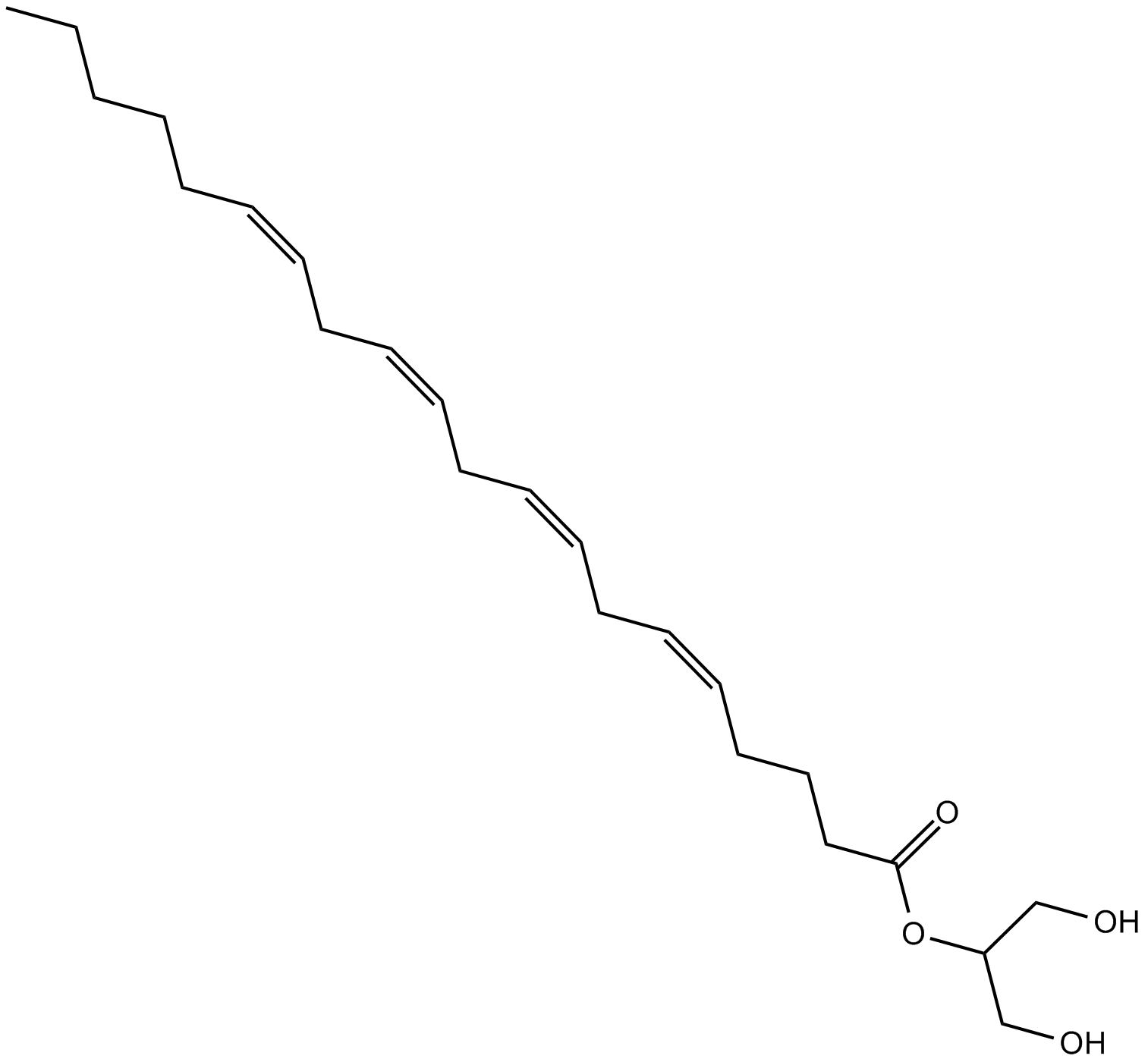2-Arachidonoyl Glycerol (Synonyms: 2-AG) |
| Catalog No.GC16403 |
An endogenous agonist of the cannabinoid (CB) receptors CB1 and CB2
Products are for research use only. Not for human use. We do not sell to patients.

Cas No.: 53847-30-6
Sample solution is provided at 25 µL, 10mM.
2-Arachidonoyl glycerol (2-AG) is an endogenous agonist of the cannabinoid (CB) receptors CB1 and CB2 (Kis = 25.3-472 and 145-1,400 nM, respectively).[1],[2],[3] Unlike arachidonoyl ethanolamide, 2-AG is present at relatively high levels in the central nervous system and is the most abundant molecular species of monoacylglycerol (MAG) found in rat brain.[1],[4] Formation of 2-AG is calcium-dependent and is mediated by the activities of phospholipase C (PLC) and diacylglycerol (DAG) lipase.1 2-AG acts as a full agonist at the CB1 receptor. At a concentration of 0.3 nM, 2-AG induces a rapid, transient increase in intracellular free calcium in NG108-15 neuroblastoma X glioma cells through a CB1 receptor-dependent mechanism.2 2-AG is metabolized in vitro by MAG lipase and fatty acid amide hydrolase (FAAH), with MAG lipase likely being the principle metabolizing enzyme in vivo.[5]
Reference:
[1]. Stella, N., Schweitzer, P., and Piomelli, D. A second endogenous cannabinoid that modulates long-term potentiation. Nature 388(6644), 773-778 (1997).
[2]. Sugiura, T., Kodaka, T., Nakane, S., et al. Evidence that the cannabinoid CB1 receptor is a 2-arachidonoylglycerol receptor. Structure-activity relationship of 2-arachidonoylglycerol, ether-linked analogues, and related compounds. J. Biol. Chem. 274(5), 2794-2801 (1999).
[3]. Pertwee, R.G. Pharmacology of cannabinoid receptor ligands. Curr. Med. Chem. 6(8), 635-664 (1999).
[4]. Kondo, S., Kondo, H., Nakane, S., et al. 2-Arachidonoylglycerol, an endogenous cannabinoid receptor agonist: Identification as one of the major species of monoacylglycerols in various rat tissues, and evidence for its generation through Ca2+-dependent and -independent mechanisms. FEBS Letters 429(2), 152-156 (1998).
[5]. Dinh, T.P., Carpenter, D., Leslie, F.M., et al. Brain monoglyceride lipase participating in endocannabinoid inactivation. Proceedings of the National Academy of Sciences of the United States of America 99(16), 10819-10824 (2002).
Average Rating: 5 (Based on Reviews and 21 reference(s) in Google Scholar.)
GLPBIO products are for RESEARCH USE ONLY. Please make sure your review or question is research based.
Required fields are marked with *




















